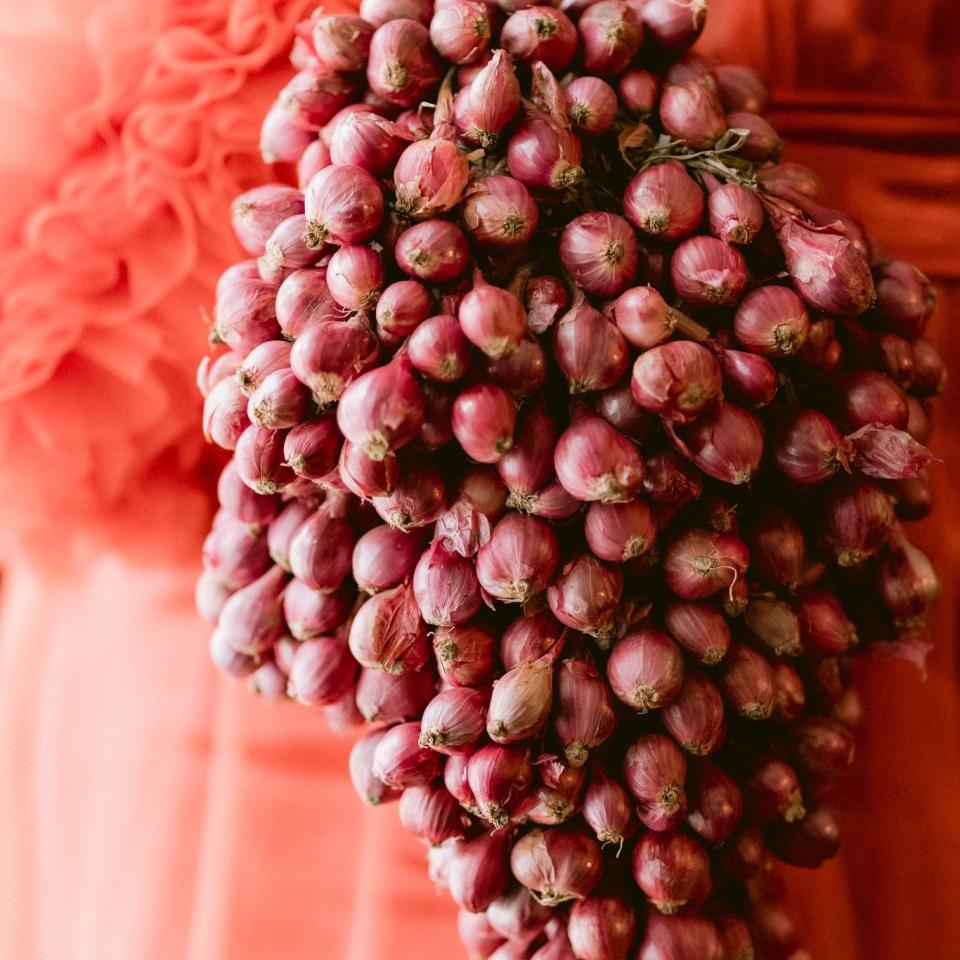Brides swap bouquets for onions as vegetable reaches luxury status

Married couples in the Philippines are posing with bouquets of onions as they celebrate their nuptials, because a chronic shortage of the vegetables – linked to cartels – is making them into a glamorous status symbol.
Onion gangs tampering with supply chains are turning the kitchen staple into a scarce commodity, with Congress now investigating why prices have more than doubled in a matter of months.
Filipino couples wanting a final lavish touch on their weddings are turning to the now-luxury items, replacing flowers with a handful of bright onions.
One bride, April Lyka Biorrey-Nobis, a 28-year-old from Iloilo City, walked down the aisle with a bouquet that weighed about 11 pounds.
Other attendees wore onion corsages, while her bridesmaids walked down the aisle holding onion wreaths.

Prices have surged from 200 pesos (£3) per kilogram to 600 pesos (£9) between October and January even as production and demand remains stable.
“[At] the end of the day, if we cannot explain price movements, then the only answer is cartels,” Representative Stella Quimbo, an economist, told a House of Representatives Committee hearing on Wednesday.
Farmers, by contrast, earn just 10 pesos per kilogram, she said.
The runaway price of onions, and the lengths some will go to get them, have captivated the Philippines over the past few months, with President Ferdinand Marcos Jr. describing food prices as an “emergency situation”.
Ten Philippine Airlines flight attendants narrowly escaped legal penalties this month for bringing in 40 kilos of onions and fruit from the Middle East.
‘Hoarders and large merchants’
Iggy Gan, a 31-year-old professional from Manila, told The Telegraph that onions have all but disappeared from restaurants and even fast food chains since October. Prices were on par with meat at many grocery stores or equivalent to a family’s weekly rice consumption, although they have slowly begun to drop.
“Onions are really substantial and a great filler for Filipino dishes so it really is an all-around effect and it’s been really bothersome,” he said.
Earlier this month, the government took emergency measures to import 21,060 metric tons of yellow and red onions, according to the Philippine Daily Inquirer, as prices per kilo eclipsed the daily minimum wage in some regions of 329 pesos to 570 pesos.
Leonardo Lanzona, an economics professor at Ateneo de Manila University, blamed government inaction and price gouging by middlemen – not a lack of onions.
He said “the presence of hoarders and large merchants who may be in collusion with one another” had allowed prices to rise, pinning the blame for this on low levels of market competition after the pandemic shuttered 70 per cent of the Philippines’ micro, small and medium enterprises.
Lanzona said the government must let “small retailers and even the farmers themselves transact directly with the consumers” rather than working through government-controlled buying programs.

